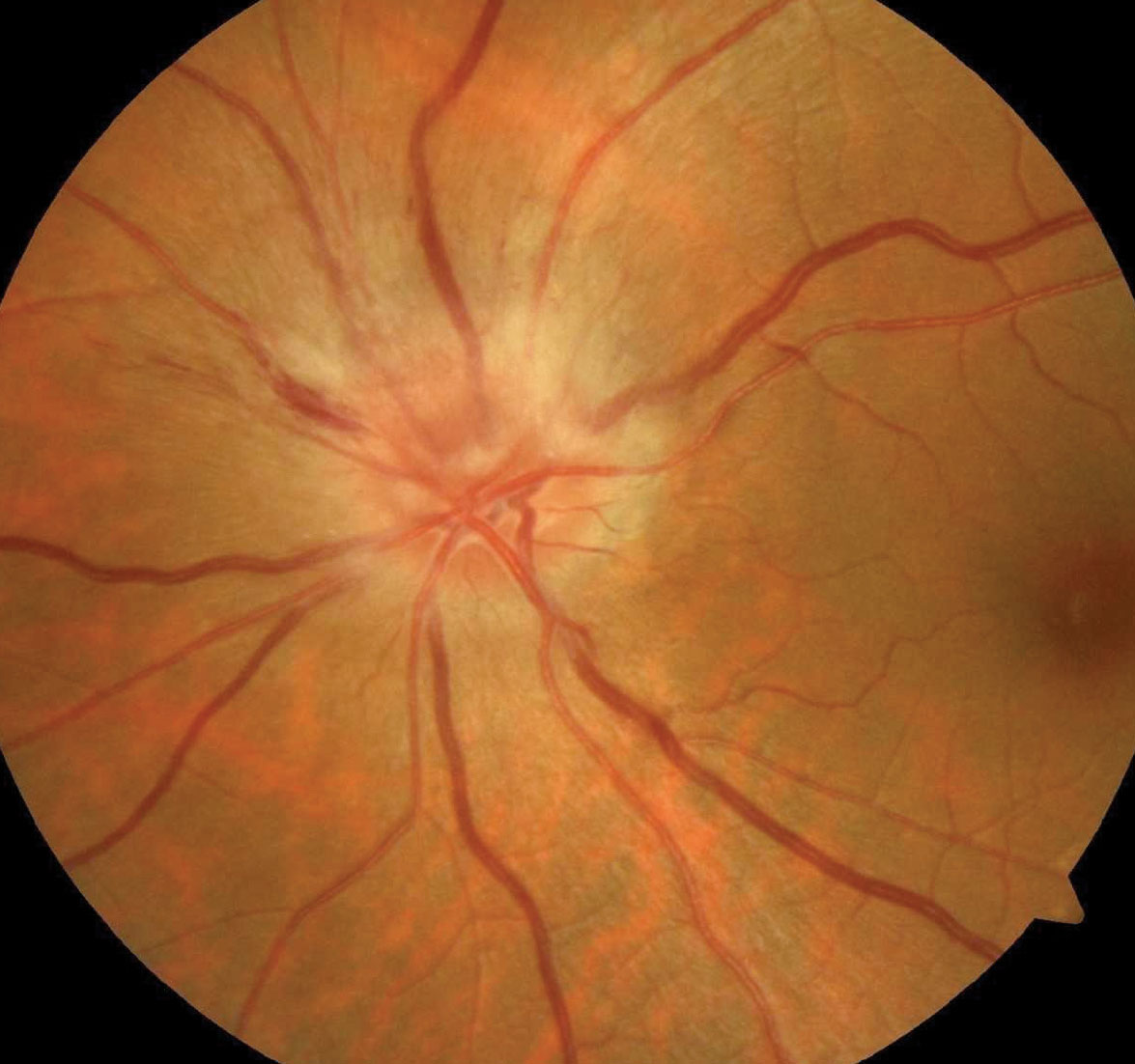 |
| Nine out of 10 neuro-ophthalmologists responding to this survey recommended against treatment for NAION in most cases, though high-dose steroids were favored in some scenarios. Photo: Neil Miller, MD. Click image to enlarge. |
One new study has emerged looking to investigate real-world practices of neuro-ophthalmologists in evaluation and management of typical cases of nonarteritic anterior ischemic optic neuropathy (NAION), since the condition currently lacks standardized guidelines. NAION in this study was assessed with a national survey sent to all practicing neuro-ophthalmologists. The questionnaire assessed their approach to risk factor evaluation and treatment; risk factors were the subject of 19 questions while six questions involved treatment and prevention of fellow-eye involvement.
A total of 36 neuro-ophthalmologists participated, with most referring patients for evaluation of these risk factors: obstructive sleep apnea (83.3%), diabetes mellitus (83.3%), hypertension (77.7%), dyslipidemia (72.2%) and optic disc drusen (38.8%). Despite this considerable agreement in risk factors, choice of recommended diagnostic tests varied, and almost 47% recommended an embolism workup. Concerning management, 91% did not recommend routine treatment, but high-dose corticosteroids were occasionally prescribed in 16.7%. Common recommendations for secondary prevention included aspirin (80.6%), smoking cessation advice (86.1%) and advising against erectile dysfunction medications for men (80.6%). As the study authors explain, the survey’s insights highlight a need for development of a set of consensus guidelines on what specific tests should be ordered to evaluate diabetes, hypertension, dyslipidemia and obstructive sleep apnea.
In their paper on the research, the researchers elaborate that NAION has strong evidence relating it to cardiometabolic risk factors. Despite the strong agreement on different risk factors to screen for, how those conditions should be assessed varied. Suspicion of diabetes, for example, may be referred for fasting glucose levels, a glucose tolerance test, serum HbA1c levels or both. Hypertension may be screened by periodic testing or referral for 24-hour blood pressure monitoring.
One issue with these results involves the recommendation of embolic workup. Almost half of neuro-ophthalmologists sent patients for this, but the presumed pathogenesis of NAION primarily involves hypoperfusion of the optic nerve head, not thrombus or emboli. In fact, embolic NAION cases are very rare, potentially lacking evidence of causality. As such, the authors recommend against routine testing for internal carotid atheromatous plaque, cardiac valve thrombus or arrhythmia. They contend that testing for this may deter primary care physicians from focusing on most relevant risk factors and lifestyle changes.
Finally, the authors were surprised by the 80% of respondents recommending aspirin as secondary prevention, since only little evidence has come out for its efficacy of reducing risk for second eye NAION. Following these results, the study authors argue that “in forthcoming practice, [professionals] may increasingly adhere to the continued use of aspirin following ‘the majority rule.’”
The investigators mention one similar study conducted in Korea, with quite different recommendations and percentages. As such, they argue that “these findings collectively emphasize the compelling need for the establishment of international guidelines for the evaluation and management of NAION. Adopting a uniform approach to diagnostic testing may help reduce the risk of second-eye involvement and overall patient disability, all while maintaining cost-effectiveness.”
Bialer OY, Stiebel-Kalish H. Evaluation and management of nonarteritic anterior ischemic optic neuropathy: a national survey. Graefes Arch Clin Exp Ophthalmol. May 15, 2024. [Epub ahead of print]. |


